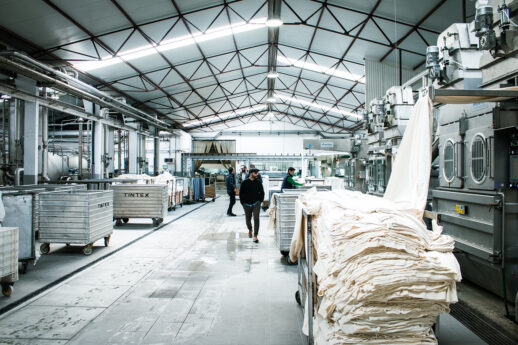Drip by Drip—The First Non-profit Organization Addressing the Wastewater Problem in the Textile Industry From Hult Alum Amira Jehia
Drip by Drip is a non-profit organization formed in 2018 by Hult alum Amira Jehia. Their mission is to tackle the water problems caused by the textile industry. We spoke with Amira to hear about the solutions they’re developing, all they’ve achieved, and their future goals for improving more communities.


What does Drip by Drip do?
We find and develop solutions for water issues caused by the textile industry. Our team brings together the people who create clothing, the brands that sell it, and the consumers who wear it. Together, we brainstorm water-saving solutions from the start of clothing production to when it hits the shelves. We are determined to improve how the industry manages water. We’re already cleaning up polluted water resources in areas heavily dependent on the textile industry, like Bangladesh for example.
“We’re on a mission to put water first in the textile industry.”




Why did you choose to tackle water poverty?
While carbon dioxide is a hot topic for sustainability and fashion supply chain managers, water doesn’t even make it onto the agenda when it causes extreme suffering and loss of life. Millions of people don’t have access to clean water for drinking and hygiene because they live near fashion production facilities. This causes them to have respiratory and skin diseases and even cancer, especially in rural areas like Bangladesh, one of the main textile industry hubs. Water is essential to life. We knew we needed to devote our efforts to addressing the textile industry’s overconsumption and pollution of fresh water. We aim to be part of a future where the production habits of companies and people’s fashion consumption no longer jeopardize our planet’s precious water supply.
How exactly does Drip by Drip resolve the water issues in the fashion and textile industries?
In areas where the textile industry is a massive income generator, drinking water is severely polluted. We help these local communities get clean water quickly and inexpensively by funding water, sanitation, and hygiene (WASH) projects, water filters, and deep wells.
In countries with a high fashion marketing presence, we create educational programs about incorporating water-saving measures into their decision-making processes. We also work on wastewater management projects as the goal isn’t just to use less water; it’s also about fixing places where water has already become polluted. This way, we can create a positive water footprint by generating more clean water than wastewater. Our long-term goal is to develop cost-effective solutions for factories to reuse water in a closed-loop process.
“We aim to transform the industry because people are more important than the clothes they wear.”

How does Drip by Drip work with other stakeholders to drive change in the whole industry?
Through partnerships with Effluent Treatment Plants (ETPs). ETPs remove contaminants from industrial wastewater to prevent environmental harm and use different processes to purify water. We develop environmental, social, and governance (ESG) initiatives for companies that want to dedicate a share of their profits to improve the lives of their workers and the nearby communities where they operate.
We’ve also been pushing factories and brands to use water-saving tools to reduce their water usage during production. Projects like mobile hospitals, water filters, or river clean-ups are executed with local partners on the ground and partially funded by collaborations with brands and the governmental sector. Some of the brands we’ve worked with include Stanley/Stella, Momox, Beechfield Brands, and UScape.
What’s the most challenging part of the work you do?
Getting the attention of C-level managers of big fashion corporations who have the power to drive change in the industry. Most fashion outlets contact us hoping for quick and cheap CSR and PR projects. But we thoroughly analyze a company’s production sites and how they affect both people and the environment.
“The goal isn’t just to use less water; it’s also about fixing places where water has already become polluted.”

What support would you like from the Hult community?
We want to help companies understand the water issues in their supply chain so they can use water more sustainably and responsibly. That’s why we’re continuously looking to establish contacts with fashion companies to introduce our work and suggest them solutions to address the wastewater problem in the textile industry. We’d also like to collaborate more with organizations and companies in water conservation and effluent management. We believe the influence and expertise of the Hult community can help us make these things happen.
What’s next for Drip by Drip?
To extend our reach to other countries that dominate the textile industry, with India at the top of our list. Drip by Drip is looking for the right partner and funding for the first pilot phase. We’re also moving into new areas that need our help, like ecosystem restoration, menstrual health management (MHM), and childcare projects. Women make up the majority of the textile workforce, so we want to help them access clean water, proper sanitation, and hygiene facilities. Besides these impact projects in the Global South, we want to continue increasing awareness in the Global North. We aim to achieve this through art experiences and workshops highlighting the connection between water and fashion. We hope this sparks discussions and individuals offer their support to help us put water first in the textile industry.
Read more from our inspiring alumni in the Hult Alumni Annual 2022.


